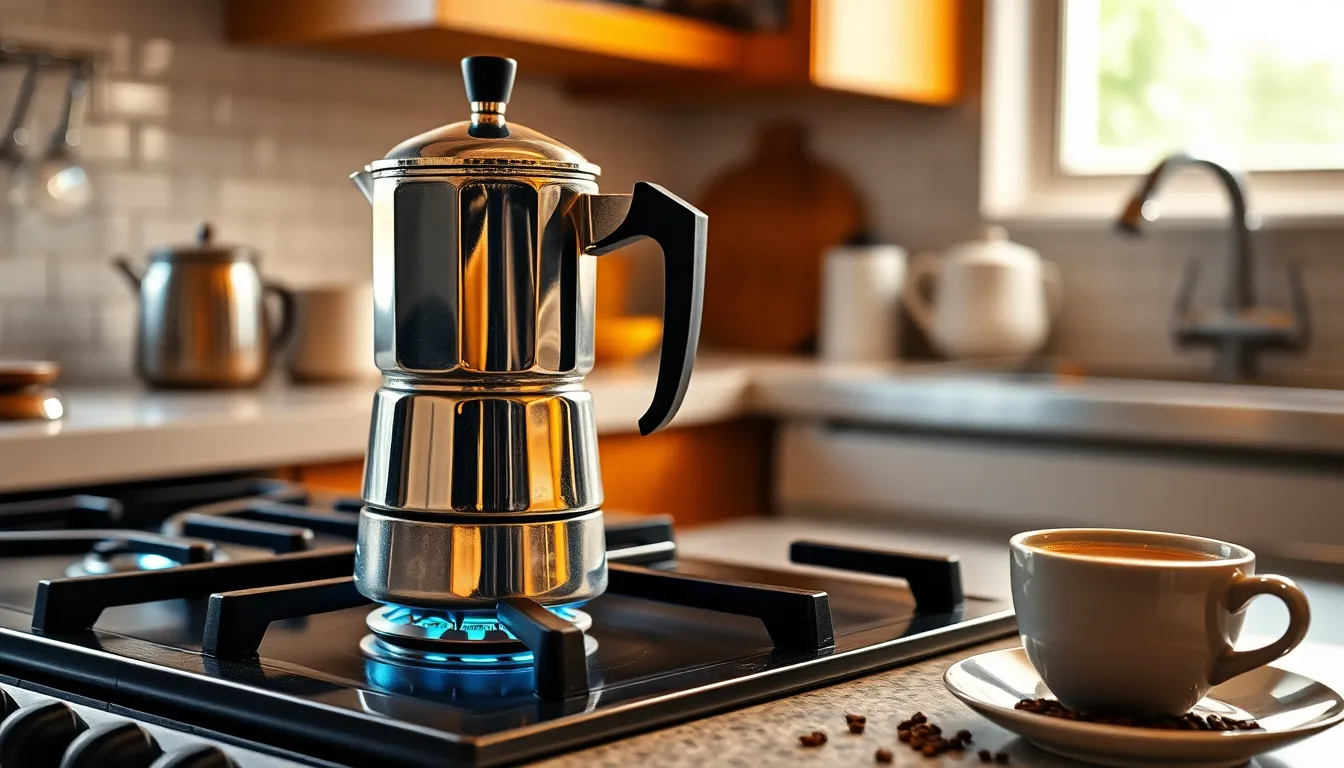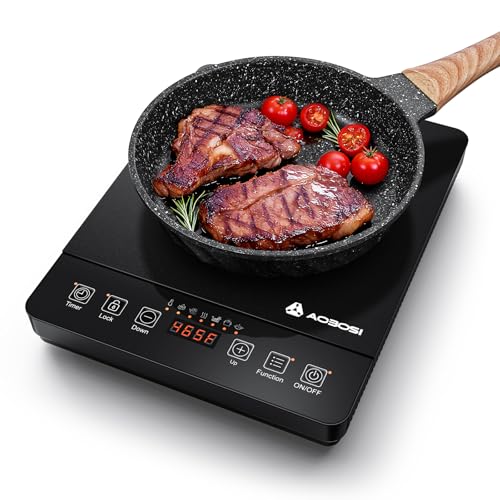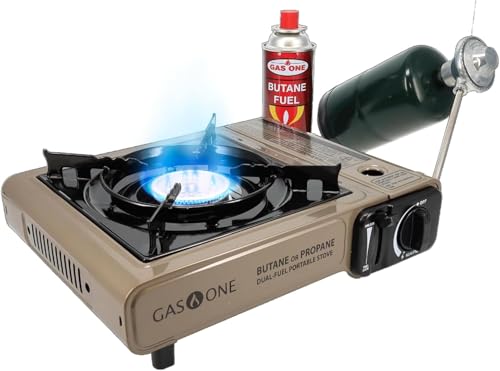Are you looking to brew the perfect cup of coffee with a Moka pot on your gas stove? This iconic Italian coffee maker has been a kitchen staple for decades, delivering rich, espresso-like coffee with minimal fuss.
When paired with a gas stove, your Moka pot can produce exceptional results – but there are techniques to master for that perfect brew. From adjusting the flame size to understanding brewing times, using your Moka pot on a gas stove requires attention to detail that pays off in your cup. You’ll discover how this simple yet effective brewing method can transform your morning routine with authentic, robust coffee that rivals expensive machines.
What Is a Moka Pot and How Does It Work
A Moka pot is an iconic Italian stovetop coffee maker invented by Alfonso Bialetti in 1933. Crafted from aluminum or stainless steel, this octagonal device produces a rich, strong coffee that’s closer to espresso than regular drip coffee. Moka pots come in various sizes, typically making 1-12 cups depending on the model.
The brewing process relies on simple but effective physics. Inside the Moka pot, three chambers work together to create coffee through steam pressure. The bottom chamber holds water, the middle contains a funnel-shaped filter basket for ground coffee, and the top collects the brewed coffee.
When placed on a gas stove, the water in the bottom chamber heats up and creates steam. This pressure forces the hot water upward through the coffee grounds in the middle chamber. The resulting coffee then travels up through a central column and into the top chamber, ready for serving.
“I discovered my grandmother’s Moka pot while visiting family in Sicily,” shares Rikki Manny. “The first time I heard that distinctive gurgling sound and smelled that intense aroma filling the kitchen, I understood why these brewers have remained beloved for generations.”
Unlike drip coffee makers, Moka pots extract coffee under pressure (1-2 bars compared to espresso machines’ 9 bars). This creates a concentrated brew with more body and richness than standard methods. Many coffee enthusiasts appreciate the Moka pot for delivering an authentic taste of Italian coffee culture right at home.
Why Use a Moka Pot on a Gas Stove
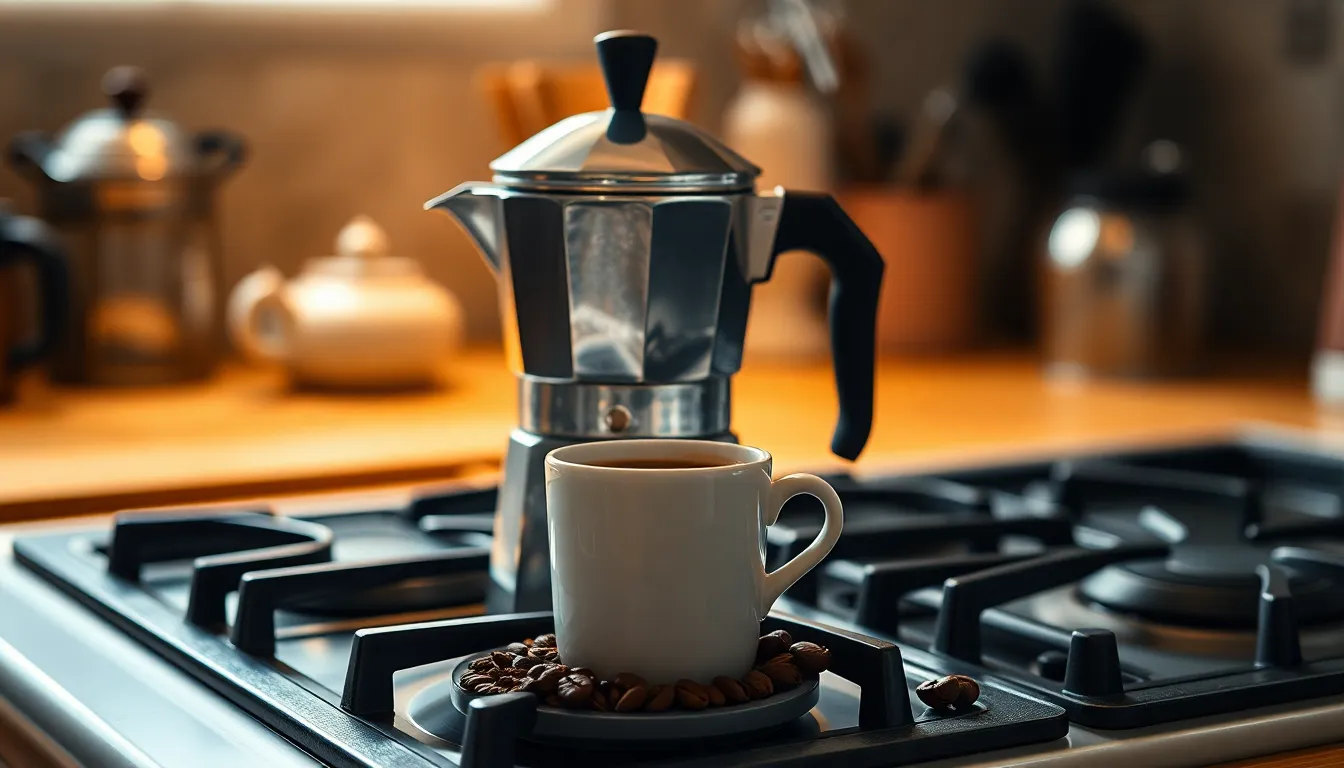
A Moka pot paired with a gas stove creates the perfect combination for brewing rich, espresso-style coffee at home. This traditional brewing method offers distinct advantages over other coffee-making techniques, delivering exceptional results with minimal equipment.
Benefits of Gas Stove Brewing
Gas stoves provide an ideal heat source for Moka pots due to their exceptional versatility. You’re able to adjust the flame precisely, controlling the brewing speed and preventing overheating that can ruin your coffee’s flavor. The portability factor makes this combination perfect for both home kitchens and outdoor adventures, as gas camping stoves accommodate Moka pots beautifully when you’re away from electric outlets.
The economic advantage can’t be overlooked – both Moka pots and gas stoves represent budget-friendly investments compared to expensive espresso machines. Your morning coffee ritual becomes more accessible without sacrificing quality. The compact, durable design of Moka pots complements the reliable performance of gas stoves, creating a simple yet effective brewing system that travels well.
Coffee enthusiasts particularly appreciate the hands-on, classic brewing experience that comes with this method. The process connects you to coffee’s rich traditions while delivering a strong, bold cup with impressive body and intense flavor notes that many prefer over other brewing methods.
Temperature Control Advantages
Temperature management represents one of the greatest strengths of using a gas stove with your Moka pot. You can modulate flame intensity with immediate feedback, a crucial factor since overheating leads to bitter, burnt coffee. This precise control helps you achieve the perfect extraction temperature every time.
Gas stoves require active engagement during the brewing process, encouraging you to monitor the pot closely rather than setting a timer and walking away. This attentiveness typically results in better coffee as you learn to recognize visual and auditory cues that indicate optimal brewing.
The quick cooling capability offers another important advantage. Once brewing completes (signaled by that distinctive gurgling sound), removing the pot from heat and applying a cold, wet towel immediately stops extraction. This technique preserves the delicate flavor balance and prevents over-extraction that can ruin your coffee’s taste profile.
Gas stove brewing enhances the Moka pot’s natural ability to produce coffee with rich flavors and satisfying caffeine content. The combination delivers consistent results that rival more complex brewing methods while maintaining the simplicity and charm of traditional coffee making.
Choosing the Right Moka Pot for Gas Stoves
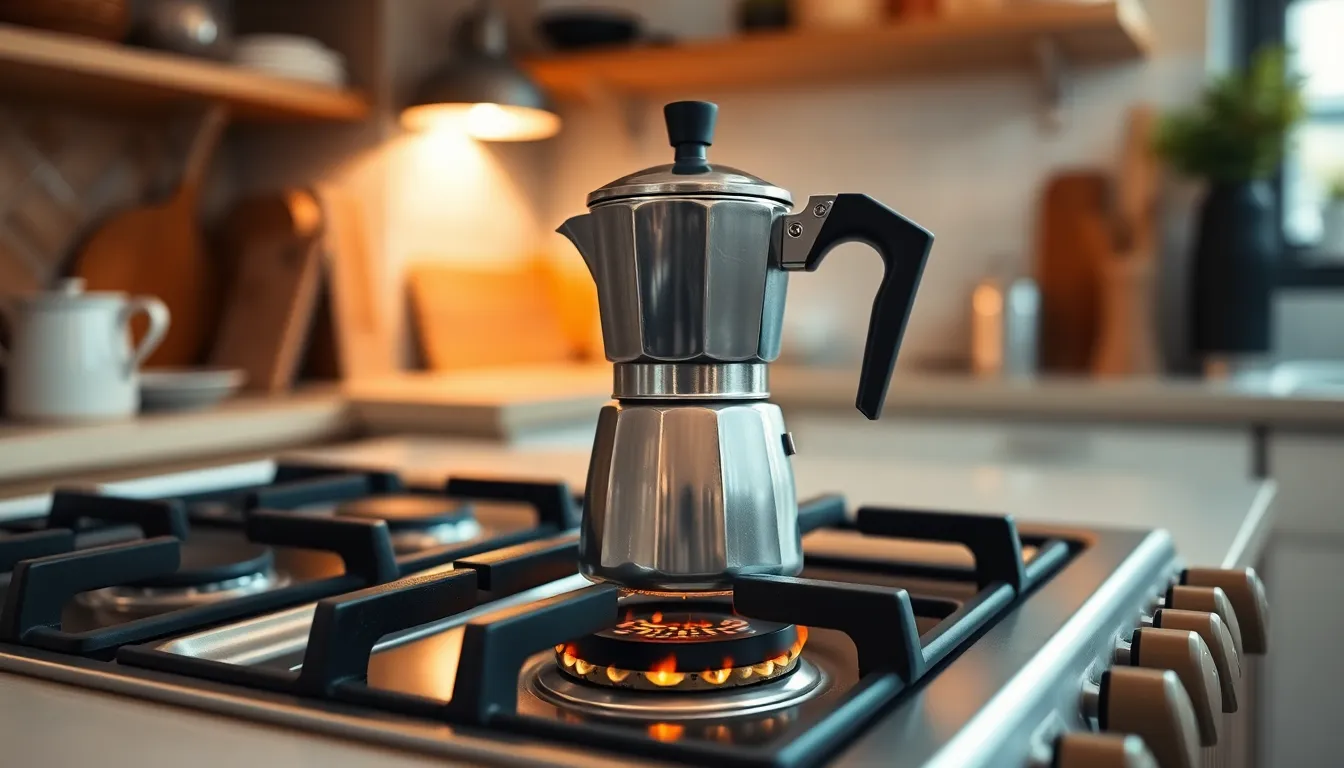
Selecting the perfect Moka pot for your gas stove involves understanding material differences and size options that match your brewing needs. Gas stoves offer excellent heat control with their open flame, providing faster and more accurate heat distribution for optimal coffee brewing.
Material Considerations
Moka pots come in two primary materials, each with distinct advantages when used on gas stoves. Aluminum models represent the traditional choice, offering affordability and lightweight handling for everyday use. These pots heat quickly due to aluminum’s excellent thermal conductivity but require careful monitoring as they’re more susceptible to damage from direct flame exposure.
Stainless steel Moka pots deliver superior durability and flame resistance, making them ideal companions for gas stove brewing. Their robust construction withstands the intense heat of open flames without warping or degrading over time. Many coffee enthusiasts prefer stainless steel for its neutral impact on coffee flavor, maintaining the pure taste of your favorite beans. Stainless steel pots also clean more easily and don’t react with acidic coffee compounds like aluminum sometimes can.
When comparing the two materials for gas stove use:
| Material | Pros | Cons | Price Range |
|---|---|---|---|
| Aluminum | Lightweight, heats quickly, traditional design, affordable | Can degrade over time, may affect taste, more prone to flame damage | $20-40 |
| Stainless Steel | Extremely durable, flame resistant, neutral taste, easier cleaning | Heavier, more expensive, retains heat longer | $30-70+ |
Size Options
Moka pots offer various capacity options to match your coffee consumption needs. The 3-cup model serves as the most popular household size, providing enough coffee for one or two people to enjoy rich, espresso-like brew. Single-cup versions work perfectly for solo coffee drinkers or those with limited counter space.
Larger families or enthusiastic coffee drinkers benefit from 6-cup models that brew multiple servings in a single batch. These larger pots maintain the same brewing principles while delivering more coffee with each use. For gatherings or households with several coffee lovers, 9-12 cup versions exist, though they require larger burners for proper heat distribution.
The brewing time varies slightly between different sizes, with smaller pots brewing more quickly than their larger counterparts. Most manufacturers offer their Moka pot designs in multiple size options, allowing you to select the perfect capacity while maintaining your preference for material and design elements.
Best Practices for Using a Moka Pot on Gas Stoves
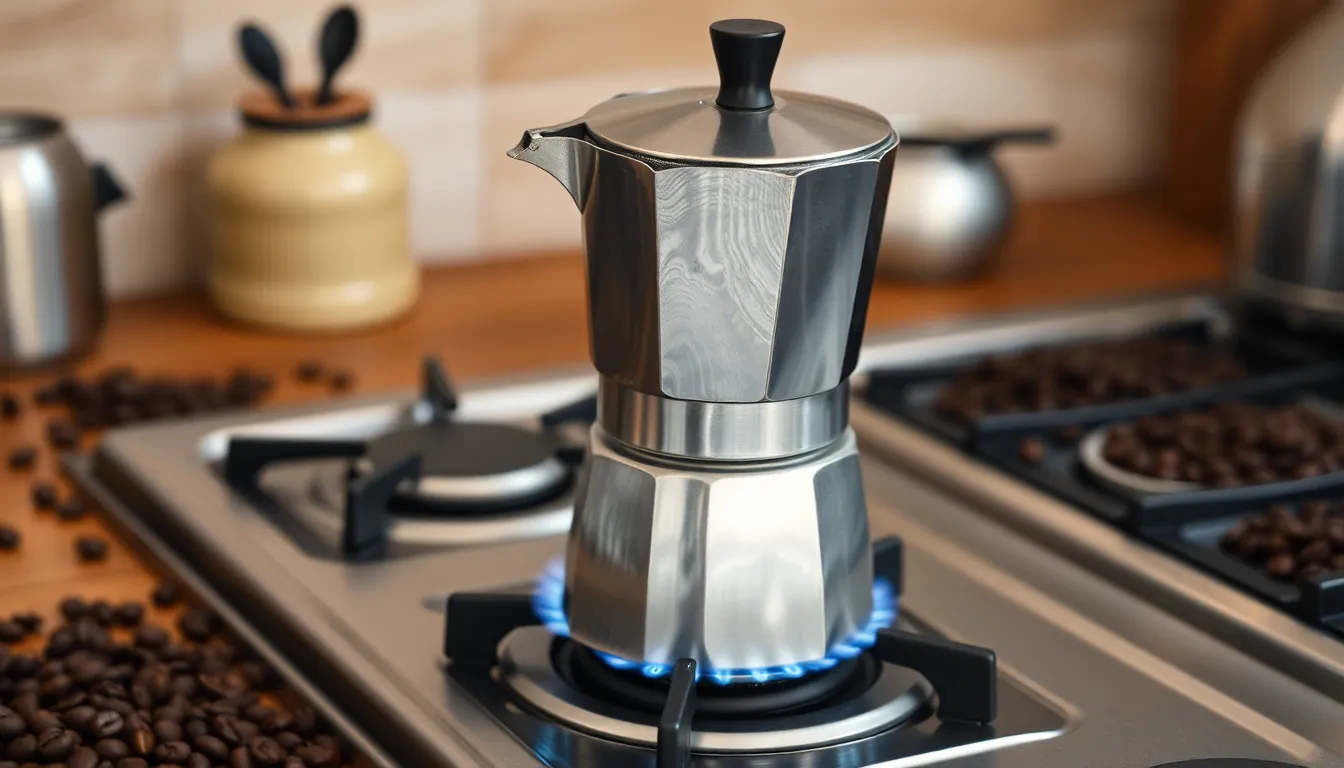
Brewing coffee with a Moka pot on a gas stove requires attention to detail for optimal results. Following these best practices ensures safety and enhances the quality of your coffee.
Proper Heat Management
Heat control stands as the most critical factor when using a Moka pot on gas stoves. Set your burner to medium heat rather than high to prevent overheating the pot and burning your coffee. Your flame height should never exceed the base diameter of the Moka pot—keeping flames contained beneath the pot ensures even heating and prevents damage to the handle or other components. This controlled approach to heat allows for proper extraction without scorching, resulting in a smoother, less bitter brew.
Safety Precautions
Safety valve positioning plays a crucial role in Moka pot brewing safety. Fill the water reservoir only to just below the safety valve—never cover this valve with water as it can cause dangerous malfunctions. Clean your Moka pot regularly, paying special attention to the filter and gasket, to prevent blockages in the safety valve that could lead to excessive pressure buildup. Don’t overfill the coffee basket with grounds, as this interferes with the proper seal between chambers and often causes spluttering or leaking during brewing. Avoid tamping or compressing the coffee grounds in the filter basket, as this creates unsafe pressure levels that can compromise both the brewing process and your safety. Monitor the pressure release function of the safety valve throughout brewing to ensure it isn’t obstructed.
Common Mistakes to Avoid
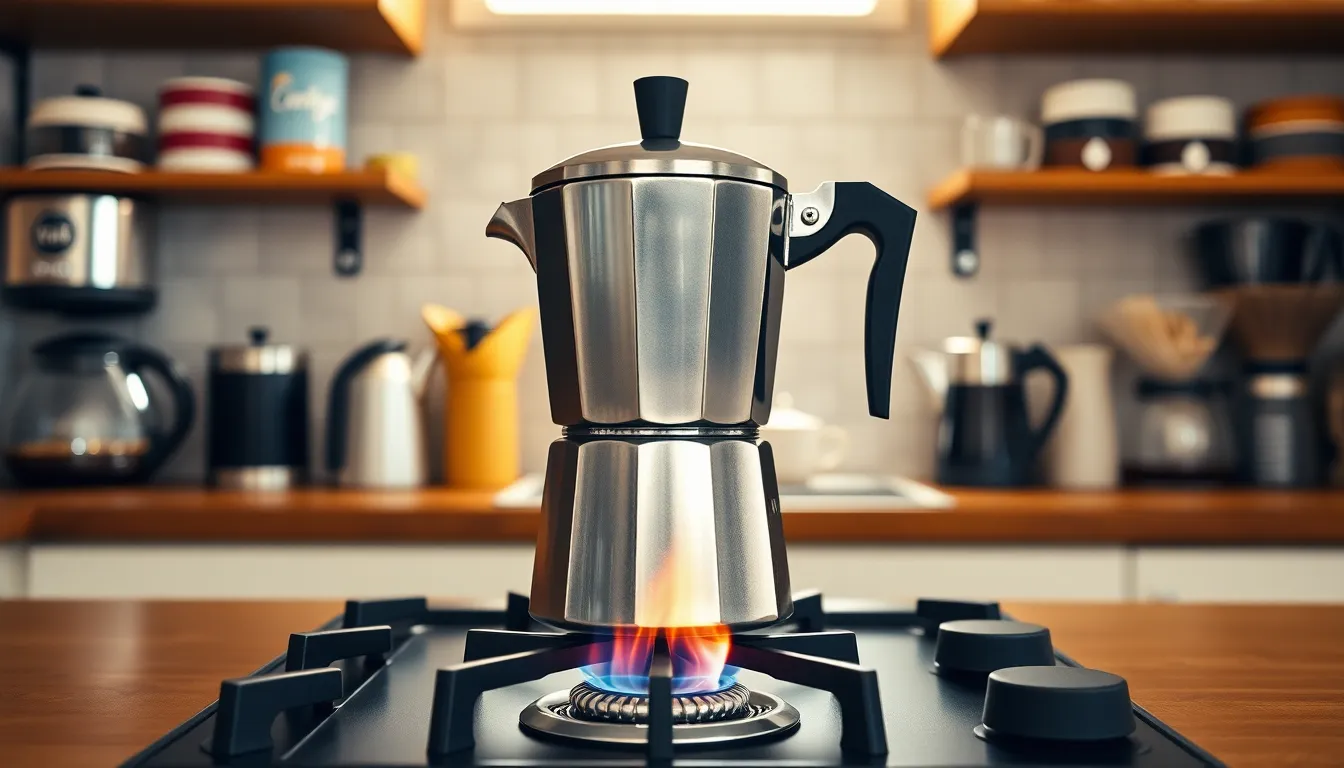
Overfilling the Coffee Basket
Overfilled coffee baskets prevent proper sealing in your Moka pot, creating messy splutters and weak coffee. Coffee grounds that spill into the threaded area disrupt the seal between the upper and lower chambers. A properly filled basket should have coffee level with the rim, not packed or mounded. Many first-time users make this mistake, assuming more coffee equals stronger flavor, but it actually compromises brew quality.
Incorrect Water Level in the Lower Chamber
Filling water above the safety valve creates dangerous pressure that can lead to explosions or hot coffee eruptions. Too little water forces the pot to build pressure longer, overheating the water and producing bitter, over-extracted coffee. The ideal water level sits just below the safety valve, ensuring optimal pressure and extraction. This mistake is particularly common among those transitioning from drip coffee makers to Moka pots.
Using a Gas Burner Too Large for the Moka Pot Base
Flames extending beyond your pot’s base cause excessive heating of the sides, ruining your coffee’s flavor profile. The excessive heat damages critical components like gaskets and handles through melting or warping. Match your burner size to your pot’s base diameter for even heating. Gas stoves with smaller burners offer better control for Moka pot brewing than larger commercial-style ranges.
Setting the Stove Flame Too High
High flames speed up brewing but produce burnt, acrid flavors in your coffee. Intense heat scorches the pot’s exterior, creating permanent burn marks that diminish its appearance. Low to medium heat maintains balanced extraction temperatures and preserves your pot’s condition. Experienced Moka pot users recognize the telltale signs of proper brewing: gentle bubbling rather than violent spurting.
Not Stirring the Coffee Before Serving
The initial coffee extraction contains stronger elements while later portions are more diluted. Unstirred coffee results in inconsistent cup strength when serving multiple people. A quick stir before pouring ensures everyone enjoys the same balanced flavor profile. This simple step dramatically improves the consistency of your final brew, especially when serving coffee to guests.
Using the Wrong Coffee Grind
Coarse grounds create weak coffee due to insufficient pressure during brewing. Overly fine grinds clog filters, forcing steam through the safety valve instead of through the coffee. Medium-fine grinds, similar to table salt texture, provide optimal extraction in Moka pots. Coffee specialists recommend checking your grind size if your pot consistently produces weak or bitter results.
Misaligning Threads or Using a Damaged Gasket
Difficulty connecting the top and bottom chambers indicates thread misalignment or gasket issues. Worn gaskets fail to create proper seals, affecting brewing pressure and safety. Replace gaskets annually and check threads carefully before each use. Thread problems often develop after improper cleaning or storage, so handle your pot carefully to maintain these critical connection points.
Maintenance and Care Tips
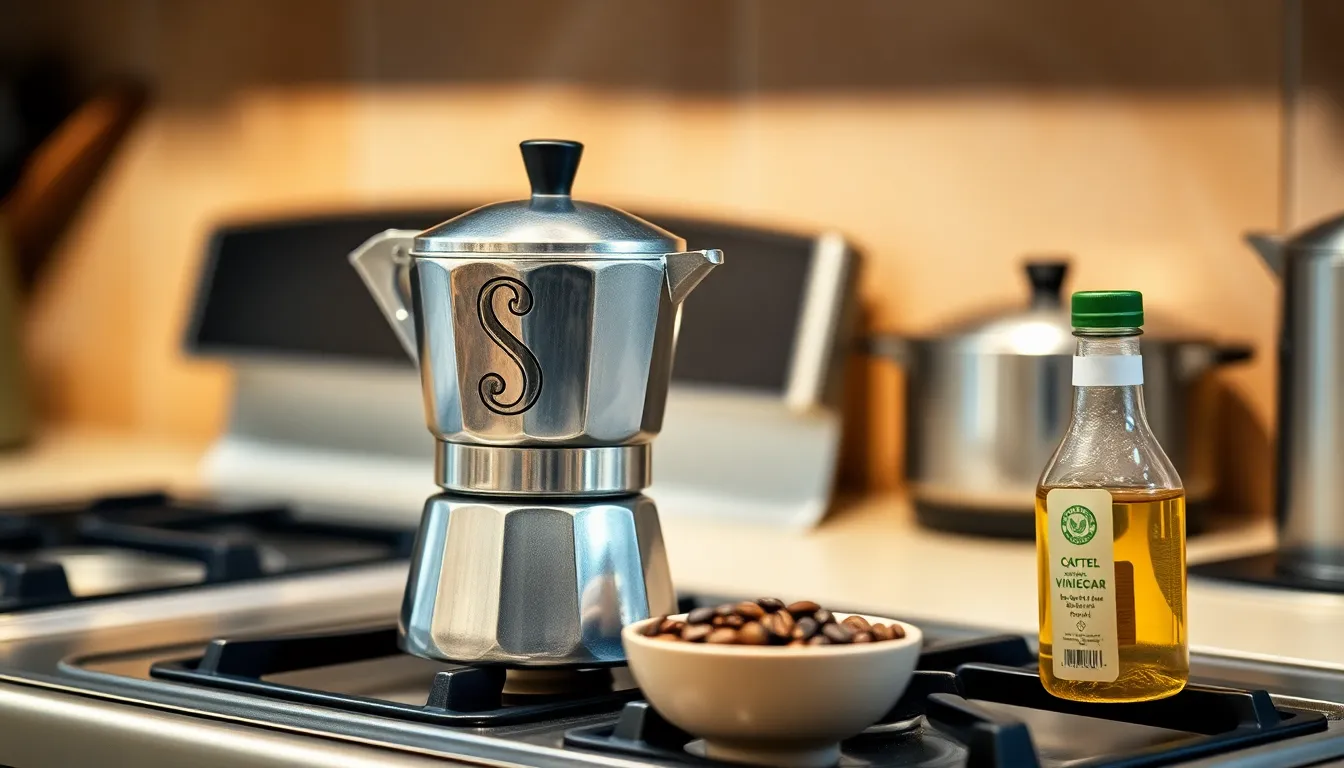
Daily Cleaning
Proper daily cleaning keeps your Moka pot brewing perfectly for years. After each use, let your pot cool completely before disassembling it. Remove the funnel and rinse all components under hot running water to remove coffee residue. Skip the soap and detergents as they can leave behind flavors that affect your coffee’s taste. Aluminum Moka pots should never go in the dishwasher as this causes tarnishing and blackening that damages both appearance and performance.
Deep Cleaning
Coffee oils build up inside your Moka pot over time, requiring occasional deep cleaning. Heat a mixture of water and vinegar in your pot (without coffee grounds) to dissolve accumulated oils and residue. Exercise caution during this process as the mixture might spurt out unexpectedly. Regular deep cleaning every few months maintains optimal flavor extraction and prevents bitter notes from old coffee oils contaminating fresh brews.
Gasket and Seal Maintenance
The rubber gasket creates the pressure seal essential for proper brewing in your Moka pot. Inspect your gasket and silicone seal every few weeks for signs of wear, cracks, or deformation. Replace these components every 4-6 months or when you notice brewing problems or difficulty screwing the chambers together. Always use gasket replacements specifically designed for your Moka pot model to ensure proper fit and function.
Assembly Tips
Correct assembly prevents leaks and ensures proper extraction in your Moka pot. Align the threads carefully when screwing the top and bottom chambers together to prevent resistance or improper sealing. Keep coffee grounds away from the threads during filling as even small particles can prevent a tight seal, resulting in spluttering during brewing and potential safety hazards on your gas stove.
Usage Tips
Season a new Moka pot by performing several practice brews before making coffee you plan to drink. These initial brews coat the interior with coffee oils that enhance flavor and create consistency in future batches. Use these practice sessions to familiarize yourself with your gas stove’s heat output and timing requirements. The seasoning process creates a natural patina inside the pot that many coffee enthusiasts consider essential for developing the pot’s characteristic flavor profile.
Alternatives to Gas Stove Brewing
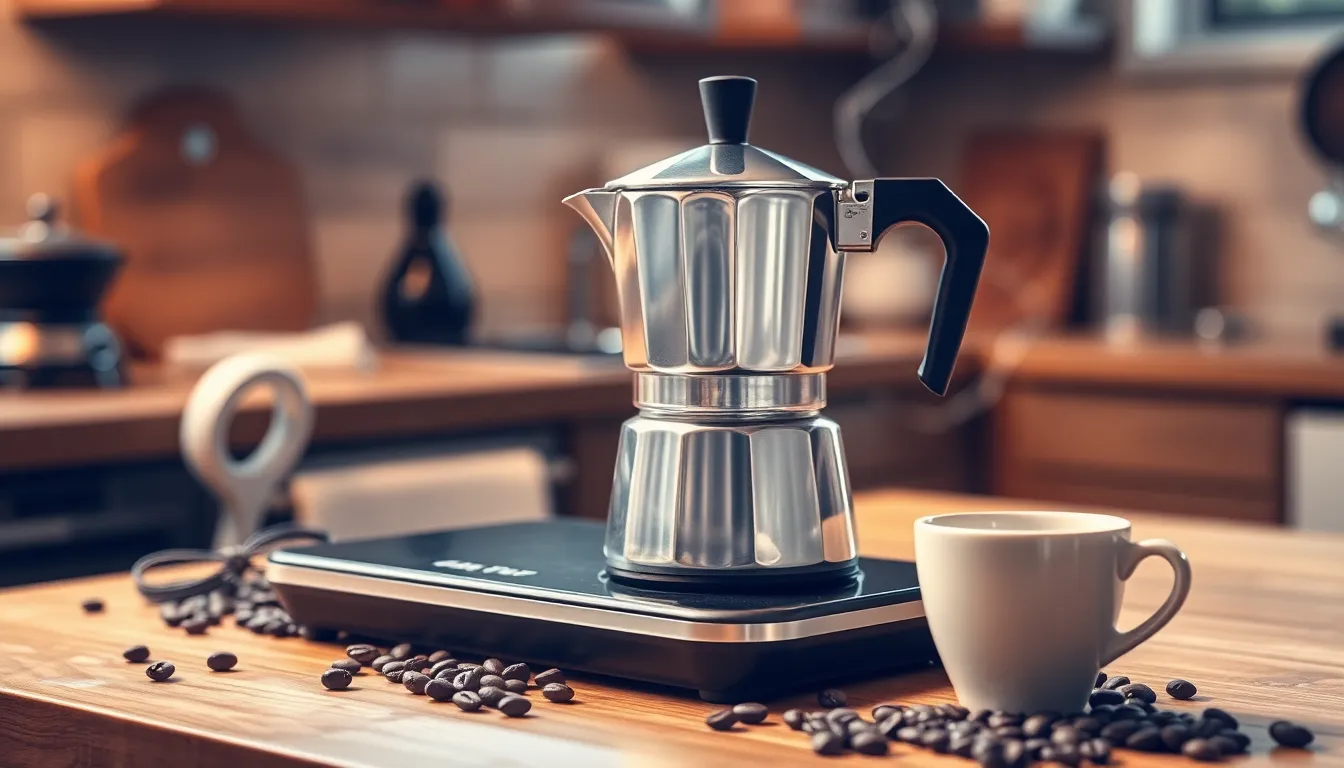
While gas stoves offer excellent control for Moka pot brewing, several alternative heating methods deliver comparable results when a gas stove isn’t available. Electric stoves provide stable, even heat that works well with Moka pots—just ensure you control the heating element’s temperature to prevent overheating your coffee.
Induction cooktops offer precise temperature control and quick heating, but they’re only compatible with Moka pots made from magnetic materials like stainless steel. The temperature precision makes induction an excellent choice for achieving consistent extraction.
Portable electric burners function similarly to standard electric stoves but in a compact form, making them perfect for travel or small kitchens. These units introduce some heat control variability, so you’ll want to experiment with settings to find your ideal brewing temperature.
For outdoor enthusiasts, camping stoves and butane burners replicate gas stove conditions beautifully. These portable options require similar flame management techniques—keep the flame smaller than the Moka pot’s base to protect the handle from heat damage.
An indirect heating method involves placing your Moka pot over a pot of boiling water, creating a gentle heat bath. This technique eliminates direct flame contact, reducing the risk of overheating or burning your coffee, and can produce exceptionally smooth results for those willing to wait a bit longer.
Each alternative offers unique advantages depending on your environment, available equipment, and brewing preferences while maintaining the fundamental brewing principles that make Moka pot coffee so distinctive. The flexibility to brew on different heat sources makes the Moka pot an incredibly versatile coffee maker for home and travel use.
Conclusion
Brewing with a Moka pot on a gas stove connects you to a rich Italian tradition while delivering exceptional coffee without expensive equipment. The combination offers unmatched control over your brewing process through precise flame management and temperature regulation.
Whether you choose aluminum for quick heating or stainless steel for durability you’ll appreciate the portability and economic benefits this brewing method provides. With proper maintenance and attention to common pitfalls your Moka pot will deliver consistently robust coffee for years to come.
Even if a gas stove isn’t available the versatility of the Moka pot means you can adapt to electric induction or portable cooking answers. Master this iconic brewing method and you’ll enjoy barista-quality coffee right at home every morning.
Frequently Asked Questions
What is a Moka pot and how does it work?
A Moka pot is an iconic Italian stovetop coffee maker invented in 1933 by Alfonso Bialetti. It uses steam pressure to brew coffee through three chambers: the bottom holds water, the middle contains coffee grounds, and the top collects the brewed coffee. When heated, steam pressure forces hot water through the coffee grounds, producing a concentrated, espresso-like brew with rich body and flavor—though at lower pressure than commercial espresso machines.
Why is a gas stove ideal for brewing with a Moka pot?
Gas stoves provide precise control over flame intensity, allowing for optimal temperature management during brewing. This prevents overheating and ensures proper extraction. The responsiveness of gas heat helps create balanced coffee by allowing quick adjustments, and the portability of gas stoves makes them versatile for home and outdoor use. This combination delivers consistent, flavorful results with impressive body and rich flavor notes.
Should I choose an aluminum or stainless steel Moka pot?
Aluminum Moka pots are lightweight, heat quickly, and are typically more affordable, but can degrade over time. Stainless steel pots offer superior durability, maintain a neutral taste, and work well on all stovetops including induction. While more expensive, stainless steel pots resist corrosion better and generally last longer. For gas stove brewing specifically, either material works well, though many enthusiasts prefer stainless for its longevity.
What size Moka pot should I buy?
Choose your Moka pot size based on your typical coffee consumption needs. Single-cup models (1-2 cups) are perfect for solo drinkers, medium sizes (3-6 cups) work well for couples or small households, while larger versions (9-12 cups) suit families or gatherings. Remember that “cups” refer to small espresso-sized servings, not standard mugs. Consider how many people you’ll typically serve and their preferred serving size.
What are the most common mistakes when using a Moka pot?
Common mistakes include overfilling the coffee basket (causing weak coffee and spills), using incorrect water levels (creating dangerous pressure), setting flames too high (scorching coffee), using burners larger than the pot base, failing to stir before serving, using the wrong grind size (too fine or coarse), and misaligning threads or using damaged gaskets. Avoiding these errors ensures better flavor and brewing safety.
How should I properly clean and maintain my Moka pot?
Rinse your Moka pot with hot water after each use, avoiding soap (especially for aluminum pots). Periodically deep clean with a water-vinegar solution to remove coffee oil buildup. Regularly inspect and replace the rubber gasket and silicone seal to maintain proper pressure. Allow all parts to dry completely before storage and reassemble carefully to prevent leaks. For new pots, season first by brewing a few throwaway batches.
Can I use a Moka pot on stovetops other than gas?
Yes, Moka pots can be used on alternative heat sources. Electric stoves provide stable heat but respond more slowly. Induction cooktops require Moka pots made from magnetic materials (typically stainless steel). Portable electric burners offer convenience for travel, while camping stoves work well outdoors. You can also use an indirect heating method with boiling water for smoother results without direct flame contact.
What’s the best way to control heat when using a Moka pot on gas?
Set your gas burner to medium heat—never high—to prevent overheating and burnt coffee. Ensure the flame height doesn’t exceed the base diameter of your Moka pot to avoid scorching the handle or heating inefficiently. Start with a slightly higher flame until brewing begins, then reduce to low-medium to complete the process gently. This controlled approach yields balanced extraction and better flavor.
How do I know when my coffee is ready to serve?
Your Moka pot coffee is ready when the upper chamber is filled and the brewing process slows to a sputter or gurgle. At this point, remove the pot from heat immediately to prevent over-extraction and bitterness. Some experts recommend placing the pot in cool water briefly to stop extraction completely. Stir the coffee before serving to blend the different extraction phases for consistent flavor throughout.
Why does my Moka pot coffee taste bitter?
Bitterness usually results from over-extraction caused by excessive heat, using water that’s too hot, or leaving the pot on the heat source too long. Using too fine a grind or tamping the grounds can also contribute to bitterness. To remedy this, use medium heat, remove the pot promptly when brewing completes, try a slightly coarser grind, and ensure your pot is clean from old coffee oils that can impart bitter flavors.

